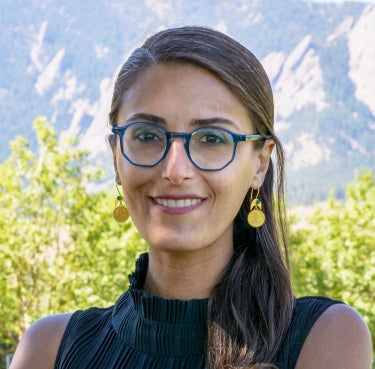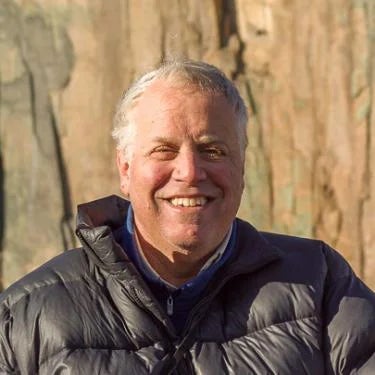In the early morning hours of Feb. 6, a magnitude 7.8 earthquake struck near the border between Turkey and Syria. Dozens of aftershocks followed in the next few days, including a 7.5 magnitude earthquake triggered by the main shock, with an epicenter just 60 miles north of the original event. The tremors leveled or damaged thousands of buildings, and, at latest count, more than 35,000 people had been recorded dead. Officials expect the death toll to keep climbing.
For many Americans, the devastation might seem far away. Experts, however, say the geology underlying Turkey and Syria shares a lot in common with the West Coast of the United States-especially California where the San Andreas Fault stretches almost 750 miles from the northern to southern part of the state.
Karl Mueller is a professor of geological sciences who studies fault systems and the earthquakes that occur in them. Shideh Dashti is an associate professor of civil, environmental and architectural engineering and acting associate dean for research in the College of Engineering and Applied Science. She examines how infrastructure responds to natural disasters and is working with colleagues in Turkey to send a team to the country to record the devastation there.
Mueller and Dashti discuss what researchers can learn from the earthquake and how California can prepare for the inevitable.

Shideh Dashti

Karl Mueller
Why do earthquakes occur?
Mueller: The outermost layer of the Earth is comprised of constantly moving tectonic plates that collide or slide along one another. The crust along plate margin stores elastic energy until is it released as sudden movement during earthquakes. Plates can collide with one another, such as between Arabia and Anatolia; or they can slide sideways, such as on the San Andreas Fault. Although the plate motions are different, the type of displacement and magnitude of the earthquakes in Turkey are similar to what is forecast for the San Andreas in Southern California.
Was this earthquake unusual?
Dashti: These events were within the East Anatolian fault system, which is at the boundary between three tectonic plates: the Arabia, Africa and Anatolia plates. This is a very active region seismically. Yet the kind of magnitude that we observed for the main shock and the aftershock is rare anywhere in the world. The last event of this size around the same area in Turkey was in 1939.
What made this earthquake so destructive?
Mueller: When earthquakes of this magnitude happen near a populated region or in an urban center, they're going to cause tremendous destruction. Depending on where you are in the world and how buildings are constructed, buildings can collapse like we've seen in Turkey.
Dashti: Magnitude is not the only thing that determines the level of damage. The epicenter here was very shallow, which means that the intensity of the ground shaking can make the earthquake more damaging. The large number of very strong aftershocks can also destroy buildings already weakened by the first event.
The region is also prone to the risk of seismic liquefaction and landslides. Liquefaction is when soil that is sturdy and strong under normal circumstances starts to act like a liquid during an earthquake. That can cause a lot of damage.
The timing of this earthquake, unfortunately, was 4 a.m., when people were home and asleep. The damage can kill more people when they're at home. In Southeastern Turkey, on the border with Syria, there is also a large population of refugees who are already highly marginalized. That makes the impact of the destruction much worse. It makes it a lot harder for them to recover.
How much do building codes help in the event of a major earthquake?
Dashti: Turkey has a modern building code, but even modern building codes don't guarantee zero damage. They are designed based on the level of risk that society is willing to accept. Nevertheless, structures that are designed based on modern building codes and constructed ethically (following the design) are expected to suffer substantially less damage overall compared to those that are not. Therefore, we expect building codes to help reduce the loss of life, property and livelihoods even in a major earthquake such as this one.
How can we learn from this tragedy to prevent these sorts of losses in the future?
Dashti: Earthquakes can cause incredible devastation, especially in regions that are suffering politically and economically. They also offer a giant laboratory for scientists to learn and apply lessons to reduce losses in the future.
The type of shaking we saw in Turkey, for example, is very applicable for California-how the earthquake occurred, how the waves propagated are important considerations, and they may affect how we design infrastructure. We want to learn about the response of buildings that were, in fact, built based on the modern codes and standards. If this building was designed based on those codes, why did it still collapse?
That's why we need to send a team right away to capture this evidence.
Could such destruction happen here?
Mueller: The thing that struck me about the earthquake in Turkey is that it's a poster child for what is forecast to occur in Southern California. It's the same type of fault. It's the same magnitude of earthquake that is likely to occur. When you look at the scenes from this earthquake, you might think, "Wow, that could be L.A."
How does California prepare for the 'big one'?
Mueller: A lot of work has been done to try and identify where the threat is greatest in terms of the built infrastructure-what buildings are likely to be a problem that can be retrofitted, and which are probably going to be OK. Studies aimed at forecasting the societal effects of the "Big One"-the next large earthquake on the Southern San Andreas, have considered how aqueducts and water supplies might be affected, and how they might be repaired quickly after the event. Early warning systems have been put in place to shut down critical infrastructure to mitigate damage. A program called ShakeOut uses drills to teach the general public how to respond once they feel an earthquake.
What can everyday people do when that earthquake arrives?
Mueller: The one thing you want to do when you feel an earthquake is to get underneath a desk or in a doorway, and just stay there until the bad shaking stops. Don't try and run outside. It's a good idea to have a couple of weeks' worth of water in gallon jugs or even a 55-gallon drum, stored in your house. You also want to have a couple of weeks' worth of nonperishable food and know where your gas shut off valve is. These are real concerns.






